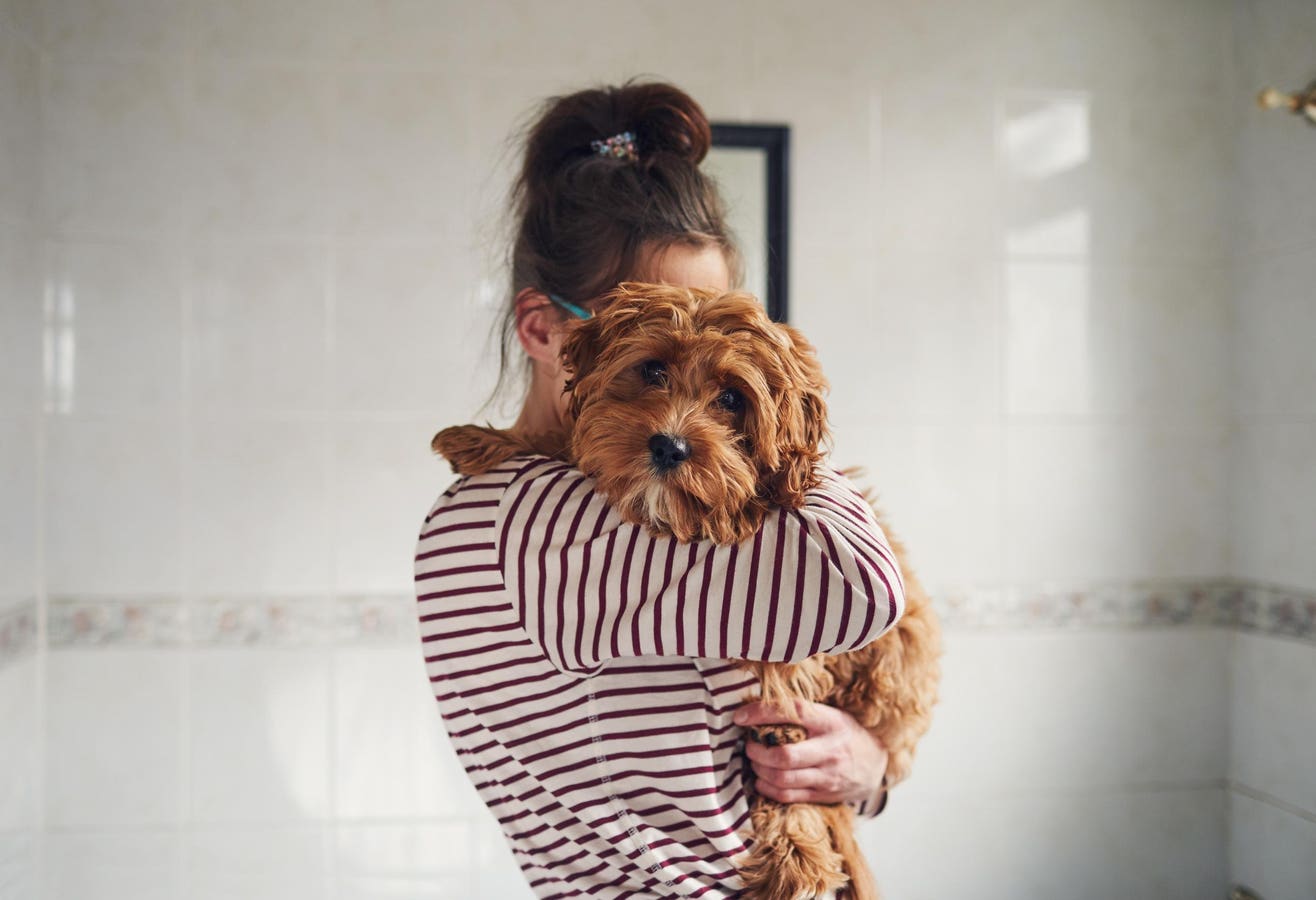Rising pet care costs from tariffs could lead to pets being surrendered to animal shelters.
When a dog or cat becomes a part of the family, most people will do everything possible to keep them. But pet ownership can come with a hefty price tag — with the average lifetime cost of care for a 10-year-old dog at $34,550, and $32,170 for a 16-year-old cat —and President Trump’s sweeping tariffs have pet owners and shelter advocates concerned about the potential consequences of spiking costs.
“The economy has already been a contributing factor in pet surrenders for several years, and additional economic strain — including the potential impact of tariffs — could make a difficult situation worse,” says Tori Fugate, director of communications for the nonprofit Shelter Animals Count, which maintains a database of U.S. animal sheltering statistics. “Rising prices for pet-related goods and services may force more pet owners to make the heartbreaking decision to surrender their pets.”
Over half of the pet owners surveyed for Rover’s True Cost of Pet Parenthood Report for 2025 expressed concern that tariffs will increase the cost of having a pet, and over a quarter were already worried about paying for what their pet needs — with one in three people reducing spending in other areas of their life to provide for their dog or cat.
The same financial pressures challenging families are impacting animal shelters by increasing operating costs — from veterinary supplies to food, cleaning products and staffing, according to Fugate.
“These rising expenses make it even harder for shelters to meet growing demand,” she says. “Shelter Animals Count is actively monitoring national shelter data to identify trends that may correlate with economic shifts.”
Veterinary Costs Already Challenging
Over half of pet owners have not taken their pets to a veterinarian in the past year, according to … More
Financial challenges are already impacting veterinary care for pets, according to the PetSmart Charities-Gallup State of Pet Care Study released today. Aimee Gilbreath, president of PetSmart Charities, was surprised by many of the findings.
“The top line is that 52% — so over half of the pet parents that were surveyed — have either not been to the vet even though they thought their pet needed care or have declined care that was recommended by their veterinarian,” she says. “I didn’t expect it to be that many. And of those 52%, 71% cited a financial consideration for why they didn’t get care.”
She was also “shocked” that one in three pet owners reported knowing a friend or family members whose pet died because they could not afford the necessary treatment.
“It’s rough for the pets, it’s rough for the people, and it’s rough for the veterinarians,” she says.
The question of whether pet insurance is helpful can be complicated, but most policies require payment at the animal hospital before eventual reimbursement, which isn’t an option for many people. So Gilbreath suggests pet parents communicate openly from the get-go with their veterinary team about any financial constraints to see if they can custom-tailor care options and potentially offer a payment plan.
PetSmart Charities has committed $100 million to invest in research into alternative payment plans and less expensive veterinary treatments, and to help fund lower-cost community clinics, she notes.
The Value Of Pets
Pets bring happiness to our lives.
Ultimately, many Americans consider pets a worthwhile expense. Dogs and cats live in 94 million U.S. households – up from 82 million in 2023, according to the American Pet Products Association’s 2025 State of the Industry Report. (Dogs reside in 51% of U.S. homes, while cats live in 37%.)
The report found Americans spent $152 billion on the pet industry last year — including veterinary care, boarding, grooming, training, food and supplies — with $157 billion in sales projected for 2025.
Still, there are intangible benefits that make Americans prioritize sharing their life with dogs and cats — from joyful greetings when we return home to cuddles on the couch and sharing outdoor adventures. Studies have found myriad health benefits related to pet ownership, from decreasing stress and anxiety to improving cognition and increasing survival rates and life expectancies after a heart attack or stroke.
In fact, the 2023 Health Care Cost Savings Report commissioned by the nonprofit Human Animal Bond Research Institute found pet ownership saves the U.S. healthcare system $22.7 billion each year.
Having a pet positively impacts wellness, too. A recent study by researchers from the London School of Economics and the University of Kent found that pet companionship increases happiness worth “up to £70,000 a year in terms of life satisfaction, similar to values obtained in the literature for meeting with friends and relatives on a regular basis” — the equivalent of over $92,000 a year.
In recognition of the value pets bring to our lives — and to help keep pets with the people who love them during financially fraught times— nonprofits across America are offering pet food pantries, grants for emergency veterinary care, free crisis boarding and low-cost vaccination clinics. Search for “financially friendly” pet services by zip code — for free — at PetHelpFinder.org.








